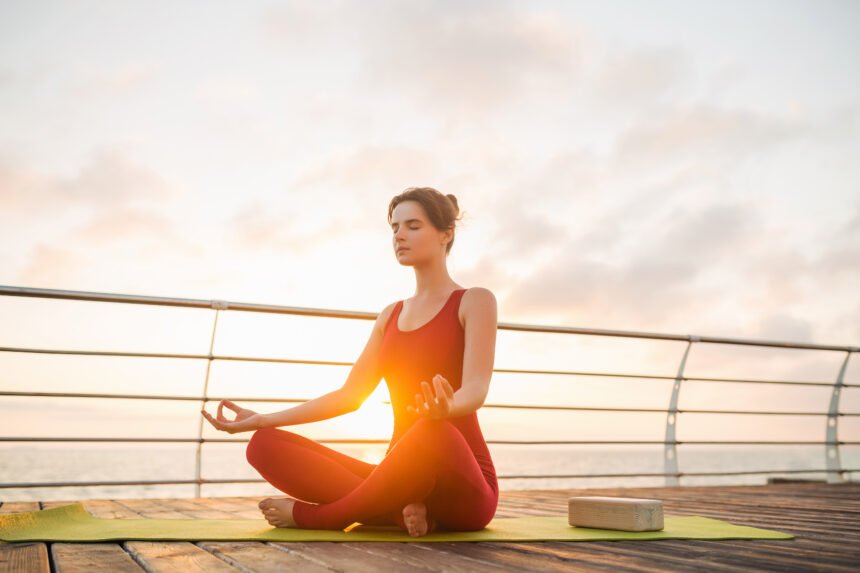Adolescence is a whirlwind of change—physical, emotional, and social. With academic pressures, social media overload, and the quest for identity, teens often face stress, anxiety, and even depression. Yoga, an ancient practice combining movement, breath, and mindfulness, offers a powerful tool to support adolescent mental health. This blog explores how yoga can benefit teens, backed by research, practical tips, and easy poses to get started.
Why Yoga for Teens?
Teenagers are navigating a unique phase of life where their brains are still developing, particularly the prefrontal cortex, which governs decision-making and emotional regulation. Stressors like exams, peer dynamics, or family expectations can overwhelm this still-maturing system. Yoga helps by:
- Reducing Stress and Anxiety: Yoga activates the parasympathetic nervous system, lowering cortisol levels. A 2019 study in the Journal of Clinical Psychiatry found that yoga significantly reduced anxiety symptoms in adolescents aged 13–18.
- Improving Mood: The combination of physical movement and mindfulness boosts serotonin and dopamine, helping combat depressive symptoms. A 2020 meta-analysis in Frontiers in Psychology showed yoga improved mood in teens with mild to moderate depression.
- Enhancing Focus and Self-Awareness: Mindfulness practices in yoga improve attention span and emotional regulation, key for teens facing academic and social challenges.
- Building Resilience: Regular yoga fosters a sense of control and self-efficacy, empowering teens to handle life’s ups and downs.
The Science Behind Yoga’s Impact
Yoga’s benefits aren’t just anecdotal. Research highlights its physiological and psychological effects:
- Brain Changes: A 2021 study in Neuroscience Letters found that 12 weeks of yoga increased gray matter density in areas of the brain linked to emotional regulation in adolescents.
- Sleep Improvement: Teens often struggle with sleep due to screen time and stress. A 2022 study in Sleep Medicine showed that yoga improved sleep quality in high school students by 20% after 8 weeks.
- Stress Biomarkers: Yoga reduces heart rate variability and blood pressure, signaling a calmer nervous system, according to a 2023 study in Pediatric Research.
Getting Started: Yoga for Beginners
You don’t need to be flexible or athletic to start yoga. Here’s how teens can ease into a practice:
- Find a Comfortable Space: A quiet corner with a yoga mat or soft surface works. No mat? A towel or carpet is fine.
- Start Small: Begin with 10–15 minutes daily or a few times a week. Consistency matters more than duration.
- Use Guided Resources: Apps like Calm or YouTube channels like Yoga With Adriene offer teen-friendly sessions.
- Focus on Breath: Teach teens to notice their breath. Simple diaphragmatic breathing (inhaling deeply through the nose, exhaling slowly) can be a game-changer.
5 Yoga Poses for Adolescent Mental Health
These beginner-friendly poses promote relaxation, focus, and emotional balance:
1.Child’s Pose (Balasana)
- How: Kneel, sit back on heels, then lower your forehead to the ground, arms resting by your sides or extended forward.
- Benefits: Calms the mind, relieves stress, and gently stretches the back.
- Hold: 30 seconds to 1 minute, breathing deeply.
2.Cat-Cow Pose (Marjaryasana-Bitilasana)
- How: On all fours, alternate between arching your back (cow) and rounding it (cat) while syncing with your breath.
- Benefits: Releases spinal tension and promotes emotional balance.
- Hold: Flow for 5–8 breaths.
3.Seated Forward Bend (Paschimottanasana)
- How: Sit with legs extended, inhale to lengthen the spine, exhale to fold forward, reaching for your feet or shins.
- Benefits: Reduces anxiety and improves focus by calming the nervous system.
- Hold: 30 seconds, breathing slowly.
4.Tree Pose (Vrksasana)
- How: Stand on one leg, place the other foot on your inner thigh or calf (avoid the knee), and bring hands to prayer position or overhead.
- Benefits: Improves balance and concentration, fostering a sense of grounding.
- Hold: 20–30 seconds per side.
5.Corpse Pose (Savasana)
- How: Lie flat on your back, arms relaxed by your sides, palms up, and breathe naturally.
- Benefits: Promotes deep relaxation and reduces mental chatter.
- Hold: 3–5 minutes.
Tips for Teens to Stay Motivated
- Make It Fun: Pair yoga with music or practice with friends.
- Set Realistic Goals: Aim for short sessions to avoid feeling overwhelmed.
- Track Progress: Journaling mood or stress levels before and after yoga can show tangible benefits.
- Involve Community: Join a teen yoga class or online group for support and connection.
Addressing Common Barriers
- “I’m not flexible”: Yoga isn’t about touching your toes; it’s about feeling good in your body. Start where you are.
- “I don’t have time”: Even 5 minutes of breathing or one pose can make a difference.
- “It’s boring”: Try dynamic flows or themed classes (e.g., yoga for athletes) to keep it engaging.
Cultural Considerations
Yoga is rooted in Indian tradition, so approach it with respect. Encourage teens to learn about its origins while adapting it to their needs. For example, mindfulness can be secular, focusing on breath and movement rather than spiritual elements, if preferred.
Conclusion
Yoga is a low-cost, accessible way for teens to manage stress, boost mood, and build resilience. By starting small, focusing on breath, and exploring beginner poses, adolescents can cultivate mental clarity and emotional strength. Encourage teens to try it for a week and notice how they feel—inhale, relax, and let the journey begin.


